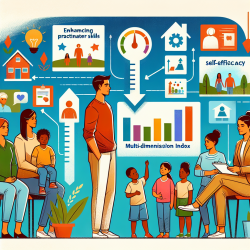Introduction
Bullying in schools is a pervasive issue that impacts students' mental health and academic performance. A recent study titled Do adolescents exposed to peer aggression at school consider themselves to be victims of bullying? The influence of sex and age provides valuable insights into how adolescents perceive bullying and peer aggression. This research, conducted by Vieira et al., explores the nuanced differences between peer aggression (PA) and bullying victimization (BV) among adolescents, considering factors like age and sex.
Key Findings
The study involved 669 adolescents aged 11-15 years and found that:
- 76.2% reported exposure to PA only, 4.7% reported BV only, and 19.1% reported both.
- Adolescents' perception of being bullied varies significantly with age and sex. For instance, younger girls were more likely to consider themselves victims of bullying compared to older girls.
- Older boys were less likely to perceive themselves as victims, even when exposed to PA.
Implications for Practitioners
For practitioners working in schools or providing online therapy services like TinyEYE, these findings highlight the importance of understanding the individual perceptions of bullying among adolescents. Here are some actionable steps:
- Tailored Interventions: Develop age and gender-specific interventions that address the unique perceptions and experiences of bullying among different groups.
- Education and Awareness: Educate students, teachers, and parents about the differences between PA and BV, emphasizing the importance of the victim's perception.
- Support Systems: Create robust support systems that encourage students to report bullying and seek help, focusing on building resilience and coping skills.
Encouraging Further Research
This study opens avenues for further research into the psychological and social factors influencing adolescents' perceptions of bullying. Future research could explore:
- The long-term mental health impacts of PA and BV.
- Effective strategies for reducing bullying in diverse educational settings.
- The role of digital platforms in exacerbating or mitigating bullying behaviors.
Conclusion
Understanding the distinct experiences of PA and BV is crucial for developing effective interventions. Practitioners must consider the individual perceptions of adolescents and tailor their approaches accordingly. By fostering a supportive and informed environment, we can better address the challenges of bullying in schools.
To read the original research paper, please follow this link: Do adolescents exposed to peer aggression at school consider themselves to be victims of bullying? The influence of sex and age.










